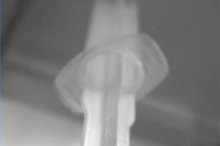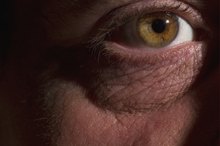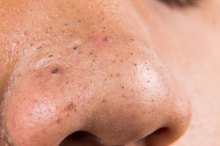How to Unclog a Tear Duct
Tears provide the moisture necessary to prevent eyes from drying out. When the tear duct becomes clogged, tears that are normally carried out through the nose have nowhere to go and spill over into the eye. If left untreated, a clogged tear duct can become infected. Learn to unblock a clogged tear duct to avoid damage to the eye.
Understand that clogged tear ducts occur at every age but are more common in infants. Babies who are plagued with tear duct problems usually have an underdeveloped tear duct system. Ninety percent of clogged tear ducts resolve themselves in infants by the age of one.
How to Unclog a G-Tube Feeding Tube
Learn More
Visit an ophthalmologist, who can diagnose the cause of the clogged tear duct. He will tailor treatment according to your needs.
Massage the eye often every day until the duct becomes unclogged. Wash your hands to avoid introducing germs into the eye. Take your index finger and place it over the corner of the eye where the duct is clogged. Firmly but gently massage downward toward the tip of the nose.
Strengthening the Ligaments of the Neck
Learn More
Know that some clogged tear ducts don't correct themselves with home treatment. Stubborn clogs may need to be surgically probed to be corrected. This outpatient surgical procedure is about 90 percent effective in children under age 1. Under general anesthesia, the doctor passes a metal wire through the tear duct and then flushes sterile saline through to make sure the obstruction is removed. The procedure takes about ten minutes.
Prepare for the chance that tear duct probing is unsuccessful. If probing doesn't work, there are two other surgical options. Silicone tube intubation involves inserting tubes into the tear duct to stretch it. These tubes remain for six months and are then removed. In balloon catheter dilation, a balloon is placed into the tear duct and filled with sterile saline. The balloon is inflated and deflated a series of times to stretch the duct. These procedures are 80 to 90 percent effective at removing the blockage.
Use antibiotic eye drops given by your ophthalmologist and visit him for a follow-up appointment.
Related Articles
References
- American Academy of Ophthalmology. Nasolacrimal Duct Obstruction in Children. Updated November 15, 2015.
- American Association for Pediatric Ophthalmology & Strabismus. Glaucoma for Children. Updated September 2018.
- Karti O, Karahan E, Acan D, Kusbeci T. The natural process of congenital nasolacrimal duct obstruction and effect of lacrimal sac massage. Int Ophthalmol. 2016;36(6):845-849. doi:10.1007/s10792-016-0208-5
Writer Bio
This article was written by the CareerTrend team, copy edited and fact checked through a multi-point auditing system, in efforts to ensure our readers only receive the best information. To submit your questions or ideas, or to simply learn more about CareerTrend, contact us [here](http://careertrend.com/about-us).









